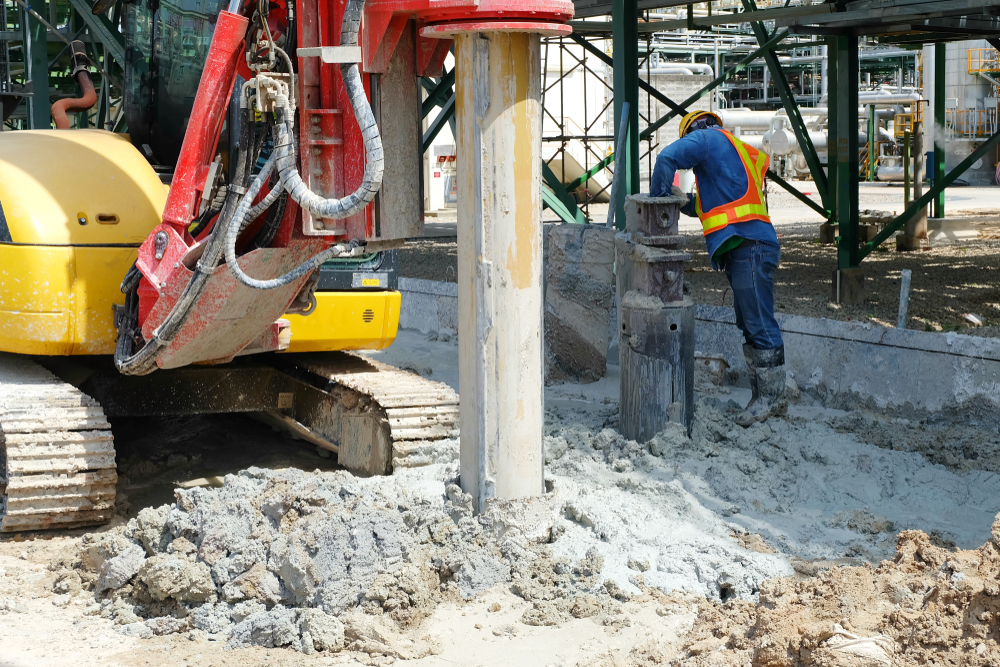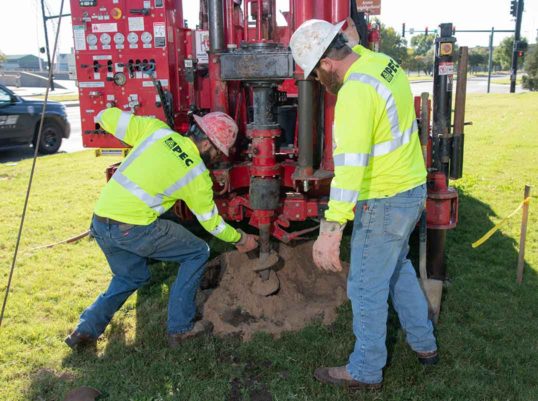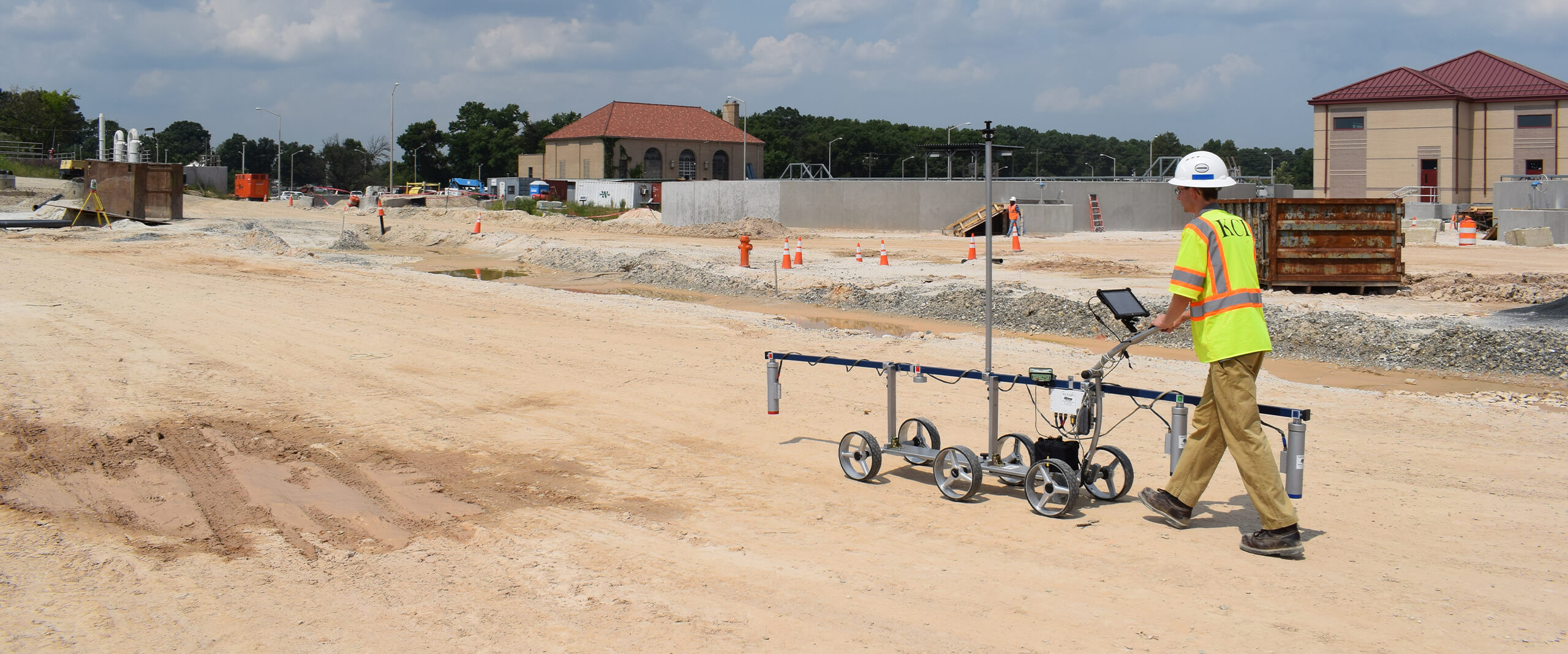Navigating the Intricacies of Geotechnical Eng Projects
Wiki Article
A Thorough Summary of the Key Responsibilities of Geotechnical Designers in Website Characterization and Ground Enhancement Strategies for Design Solutions
Geotechnical designers are essential to the successful execution of engineering jobs, charged with the crucial obligations of site characterization and the application of ground improvement strategies. Their work entails a thorough evaluation of subsurface problems, employing different testing methods to recognize dirt and rock residential or commercial properties. This fundamental knowledge not just educates design decisions yet likewise reduces prospective dangers related to ground instability. As we discover the multifaceted roles of these specialists, it ends up being obvious just how their proficiency shapes the security and effectiveness of engineering services. What particular strategies and assessments stand out in this vital discipline?Duty of Geotechnical Engineers
Geotechnical designers play an essential duty in the style and building of facilities by evaluating the actions of soil and rock underneath the surface - civil consulting engineers. Their responsibilities incorporate examining subsurface problems to educate layout choices that make sure structural security and safety. By carrying out comprehensive evaluations of soil properties, consisting of shear compressibility, toughness, and leaks in the structure, geotechnical designers offer essential data that affects the option of ideal building and construction products and methodsIn enhancement to evaluating soil mechanics, geotechnical engineers are tasked with determining prospective dangers such as landslides, sinkholes, and ground negotiations. Their proficiency helps alleviate threats related to these geotechnical sensations, thereby safeguarding both the environment and public security. They additionally collaborate carefully with other engineering self-controls, ensuring that geotechnical considerations are integrated into general job layout.
Moreover, geotechnical engineers take part in the analysis of existing structures, giving suggestions for retrofitting and fixings when needed. Their extensive understanding of soil-structure interaction is crucial for the development of lasting infrastructure options. Generally, the duty of geotechnical designers is important to the successful realization of building jobs, guaranteeing they are risk-free, resilient, and certified with governing standards.

Website Characterization Procedures
Efficient site characterization procedures are necessary for comprehending the subsurface problems that affect job design and execution. Geotechnical designers use a systematic technique to collect, evaluate, and translate information relating to soil, groundwater, and rock characteristics. This procedure begins with a thorough testimonial of existing literature and archaeological site data, giving understandings into previous site problems and potential challenges.
Information evaluation complies with fieldwork, where engineers utilize geostatistical approaches to analyze searchings for and develop geological versions. Via thorough site characterization, geotechnical designers lay the groundwork for successful job implementation, optimizing and lessening unforeseen issues source appropriation.
Dirt and Rock Screening Techniques
While understanding subsurface conditions is essential, the option of appropriate dirt and rock screening techniques is just as vital for exact analysis and style. Geotechnical designers utilize a range of testing methods to assess the physical and mechanical properties of soil and rock materials.Laboratory tests, such as Atterberg restrictions, grain dimension evaluation, and unconfined compressive strength examinations, provide vital data on dirt behavior under various wetness conditions and loading situations. These tests assist determine soil category and forecast settlement or shear strength characteristics important for foundation layout.
In-situ screening methods, consisting of Criterion Penetration Tests (SPT), Cone Infiltration Examinations (CPT), and stress meter tests, allow designers to collect data directly from the Bonuses ground. These techniques provide beneficial understandings right into the soil's thickness, consistency, and stratification without the need for substantial sampling.
Rock testing commonly involves core tasting and laboratory analysis to analyze residential properties like uniaxial compressive toughness and rock quality classification (RQD) With each other, these soil and rock testing techniques make it possible for geotechnical designers to make informed choices concerning site-specific obstacles, ensuring the safety and security of engineering options.
Ground Improvement Techniques
Ground enhancement techniques are necessary for boosting the engineering residential or commercial properties of soil, therefore raising its load-bearing capability and reducing negotiation. These approaches are important in addressing challenges offered by problematic or weak dirts, which can significantly affect the stability and toughness of structures.Numerous ground improvement strategies are employed, including compaction, grouting, and dirt stabilization. Grouting, on the other hand, entails infusing a liquid material right into the ground to advice fill voids and improve dirt communication.
Dirt stabilization includes an array of techniques, from chemical additives to mechanical therapies, intended at boosting the dirt's resistance to disintegration and deformation. Techniques such as lime stablizing or concrete mixing modify the residential or commercial properties of the soil at a fragment level, enhancing its overall efficiency.
Significance of Geotechnical Analyses
Geotechnical analyses play a crucial function in the planning and design of design tasks, as they provide crucial info about the subsurface conditions. Comprehending dirt buildings, rock developments, groundwater levels, and possible geohazards is vital for guaranteeing the stability and security of structures. These assessments make it possible for engineers to make informed decisions concerning site choice, style criteria, and building and construction techniques.
The significance of geotechnical assessments extends past preliminary job phases; they are crucial in threat monitoring and expense efficiency. By identifying possible concerns early, such as dirt negotiation, incline instability, or excessive groundwater, designers can create appropriate reduction strategies, lowering the possibility of costly delays and structural failings. Furthermore, these analyses sustain compliance with regulative needs and boost the sustainability of design methods.

Conclusion
Finally, geotechnical engineers are crucial to guaranteeing the security and stability of engineering projects via extensive website characterization and ground enhancement strategies. geotech engineer. Their organized approach to analyzing subsurface problems, combined with their suggestions for reliable ground adjustment, significantly boosts dirt buildings and load-bearing ability. The competence of geotechnical engineers not just helps with enlightened task planning however additionally makes certain compliance with laws and promotes reliable interaction among stakeholders, ultimately adding to effective engineering end resultsGeotechnical designers play a pivotal role in the layout and building and construction of facilities by assessing the actions of dirt and rock below the surface area. By carrying out detailed analyses of dirt residential properties, including shear compressibility, permeability, and strength, geotechnical engineers offer vital information that affects the selection of proper building and construction products and strategies.
In enhancement to examining dirt mechanics, geotechnical engineers are entrusted with identifying possible dangers such as landslides, sinkholes, and ground settlements. Geotechnical designers use a systematic method to collect, evaluate, and translate data relating to groundwater, dirt, and rock features. By identifying potential concerns early, such as dirt negotiation, slope instability, or excessive groundwater, designers can develop proper reduction approaches, decreasing the possibility of expensive delays and structural failings.
Report this wiki page